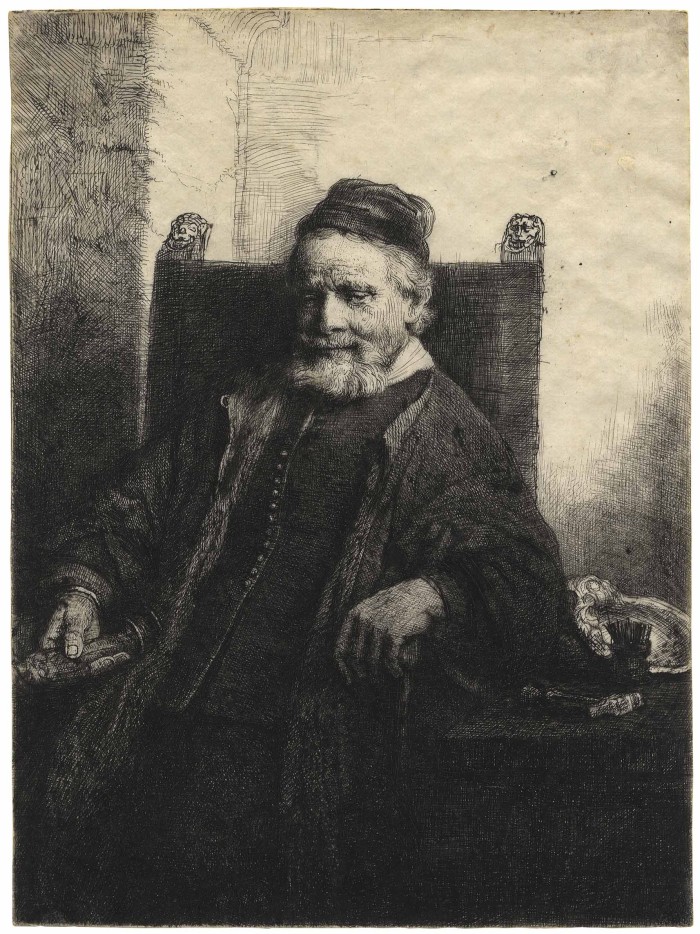Jan Lutma, Goldsmith 1656
Rembrandt Harmensz. van Rijn
1606 Leiden – Amsterdam 1669
Jan Lutma, Goldsmith 1656
etching, engraving, and drypoint on thin chine; 196 x 150 mm
Bartsch 276, White/Boon 276 first state (of three); Hind 290; New Hollstein 293 first state (of five)
provenance
John Malcolm, Poltalloch, Argyleshire, Scotland and London (cf. Lugt 1489)
British Museum, London, acquired from the above in 1895 (cf. for the museum’s stamps designated to the Malcolm collection Lugt 1780–81; all the above according to the annotated Colnaghi label on the old backing of the frame)
P. & D. Colnaghi & Co., London (their stock no. in pencil on the verso C.21644)
Percival Duxbury (1872–1945), Bredbury, Cheshire (acquired from the above in 1936)
Lilian Honor Lewis (by descent; d. 2013)
New Hollstein lists three other impressions on Chinese paper.
Jan Lutma (c. 1584-1669) was a master gold and silversmith; he holds an object with a turned stem (possibly a candlestick) in his right hand, and on the table at his left is a drinking bowl.
Rembrandt used a fine needle to draw the portrait and furniture; then enriched the plate through hatching and drypoint. In this impression one can observe substantial drypoint burr, particularly in Lutma’s coat. In the second state Rembrandt added a window in the room (with a signature and date in the upper left pane), and shadows on the wall.
